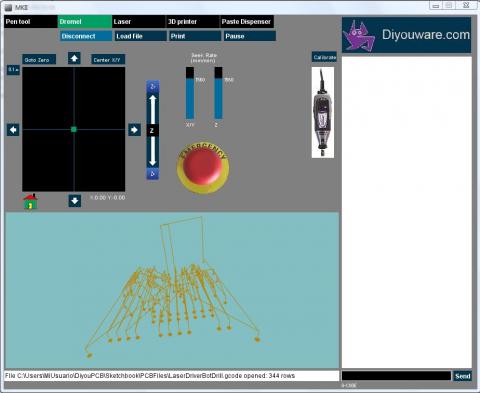La siguiente es una lista de las especificaciones preliminares del nuevo robot:
Área de trabajo (X, Y, Z)
70x80x80mm. La hemos reducido considerablemente a un tamaño de Shield Arduino. De hecho a veces llamamos al robot "The Arduino Shield maker". La hemos reducido porque preferíamos que fuese antes precisa que grande. Raramente creamos en casa PCBs de gran tamaño, pero si lo necesitáramos, siempre podemos dividir el circuito en dos o más módulos e imprimirlos por separado. Reducir el área de trabajo tiene algunas ventajas: el robot es más barato, más preciso, robusto, más pequeño y más manejable.
Mecánica
MKII es impulsado por tres motores Nema 17 y husillos trapezoidales. Sustituimos las correas dentadas que usamos en la MKI por husillos para eliminar los problemas de vibraciones y resonancias. Después de las primeras pruebas hemos visto que efectivamente es la solución y ahora el láser dibuja con un rayo preciso y estable sin ninguna perturbación mecánica.

Velocidad
Podemos ir tan rápido como 1.200-1.500mm/min. Creemos que es suficiente para nuestros propósitos. El paso (pitch) de los husillos establece el límite de velocidad. El robot puede ir más rápido actualizando los husillos a un paso más elevado pero aumentando considerablemente el precio.